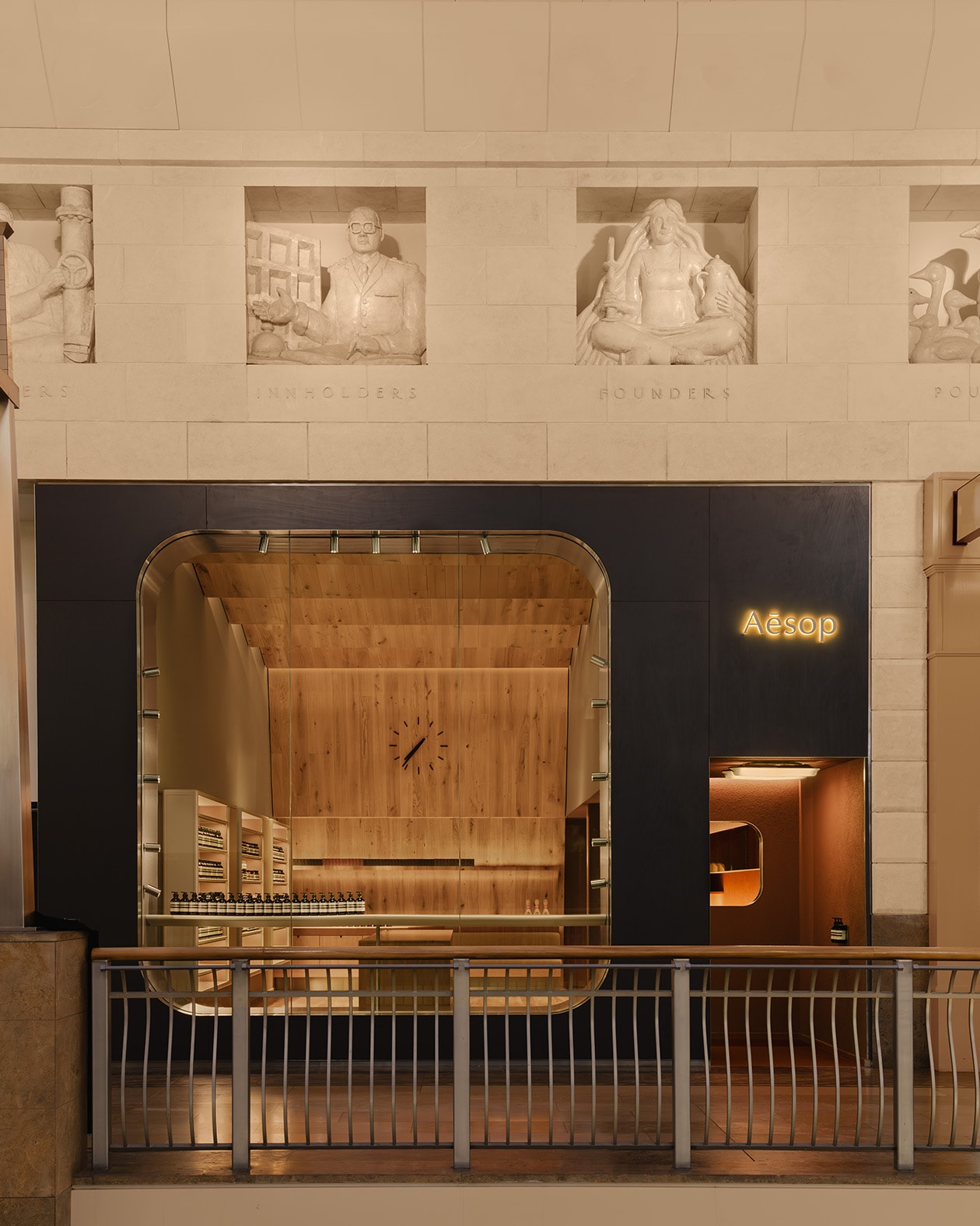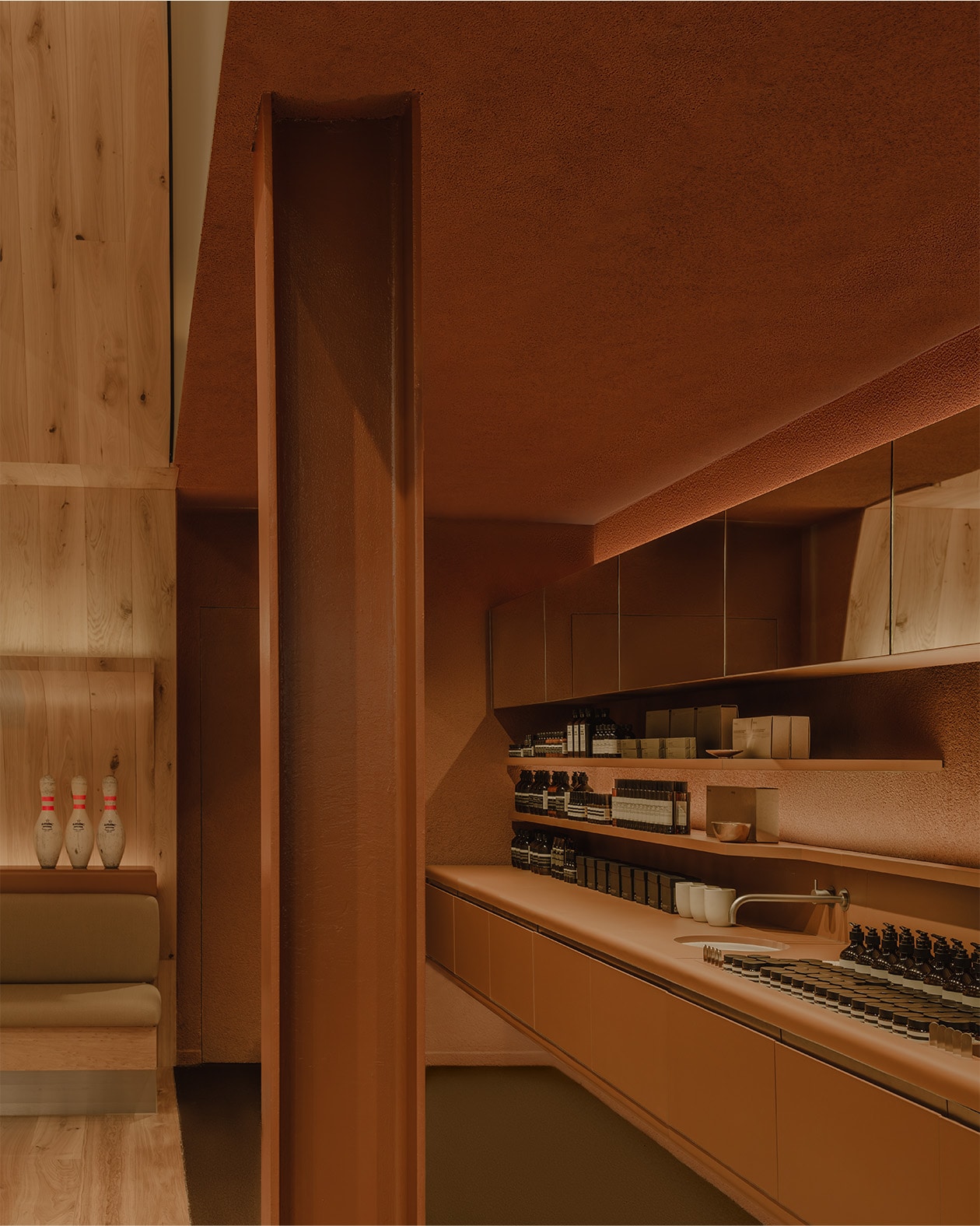The foundations of Bluewater Shopping Centre rest on the ruins of a defunct chalk quarry in Kent. Despite the inhospitable nature of the excavated geology, construction was completed in 1999. Sculpted by heavy machinery, the artificial landscape that exists today bears the memory of that negative space—a place defined by human intervention. With its lake and paddle boats, three malls, massive cinema and multitude of cafés and restaurants, the centre is a labyrinth of leisure, where time passes in a kind of blur, with no clear limits. Designed by our in-house team, Aesop Bluewater is an architectural abstraction of the tension between these two contrasting and yet similarly anthropogenic topographies.
The space embodies the idea of a promenade, of a day spent weaving through endless shops, stopping intermittently for rest, sustenance, and play. It recalls a collective imaginary of mall-based entertainment, symbolised by the somewhat outmoded pastime of ten-pin bowling, which some of our architects remember fondly from their 1990s childhoods. Just as the mall’s spatial organisation conditions how customers behave, and a bowling alley sets strict lanes for balls to roll down, the sequence of one's journey through the store is highly determined.


